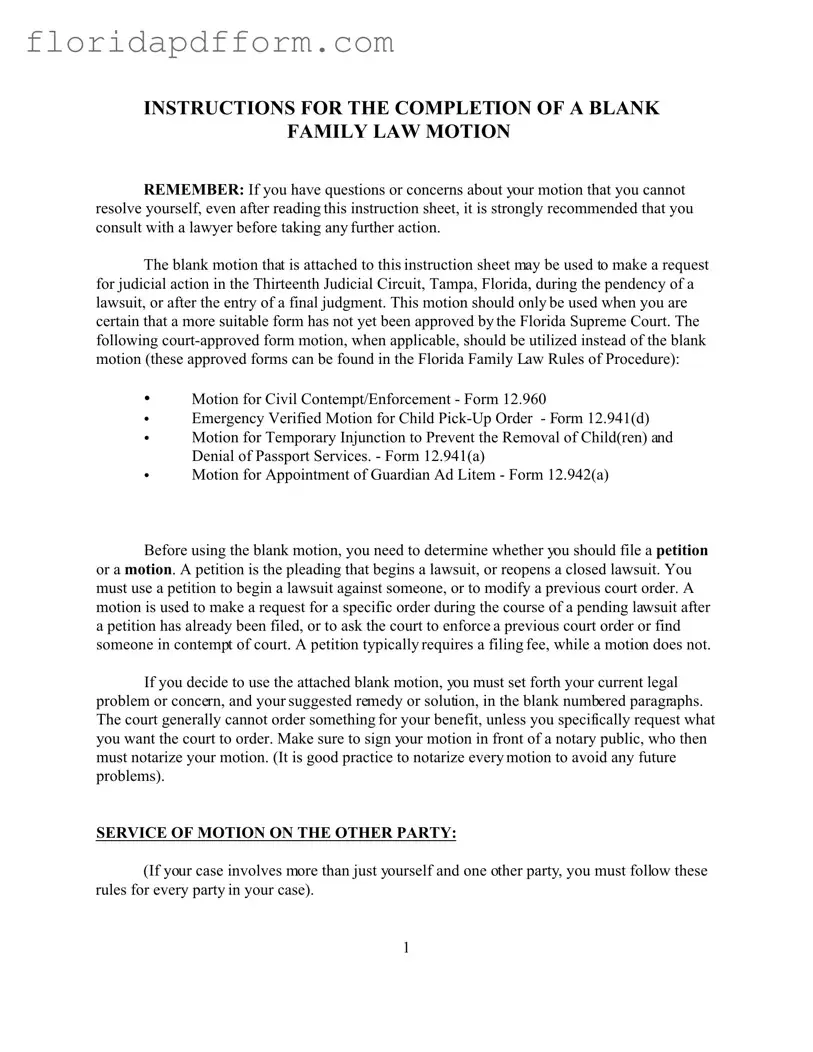Free Motion Florida Form
The Motion Florida form serves as a blank template for individuals seeking judicial action within the Thirteenth Judicial Circuit in Tampa, Florida. This form is applicable during an ongoing lawsuit or after a final judgment has been entered. It is essential to use this form only when no other suitable court-approved forms are available for your specific request.
Launch Editor
